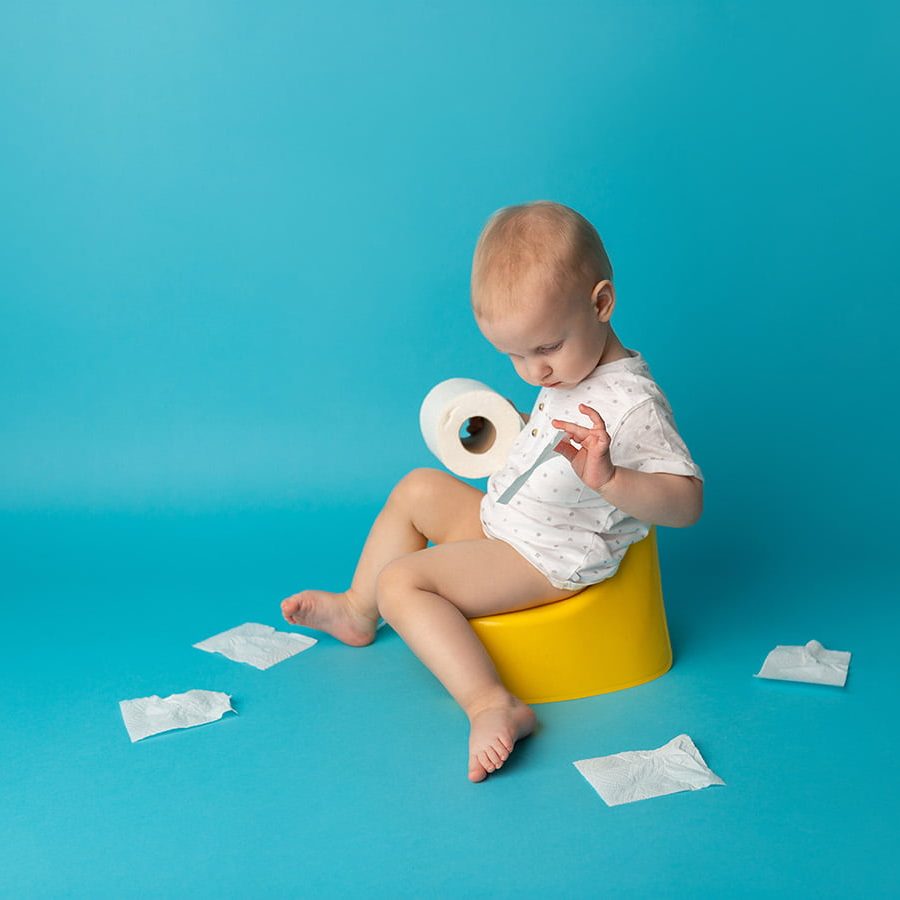When our kiddos are growing, a lot of good moments and challenges come to the surface, and how to potty train a child can be a big one of them.
Potty training is a special time in the lives of a child and the parents, as it indicates a new milestone about to be achieved. Besides that, it stimulates the first steps towards a child’s independence.
When to start potty training
Considering that, what is the best age to potty train your child? It depends on some factors. Following western cultures, the ‘proper time’ is considered to be between 24 and 36 months, but it can change according to different cultures. Don’t forget of course, that the goals of the parents and child’s own time are to be at play.
Also there is not a specific rule about the right time to do it, so the best approach is to understand the signs that it might be time to start using the potty chair.
Signs your toddler is ready to potty train
Your Child Shows Interest
Usually the first sign a child shows that he or she is ready to potty train, is interest in the matter. Children are in a highly curious phase of their lives, and it’s natural to mimic their parents’ actions or to wonder what happens inside the bathroom.
The interest might be shown by wanting to use the toilet and even verbalizing it in subtle ways such as ‘not wanting to be dirty’ or even wanting to ‘pee pee’. If a toddler shows he or she wants to relieve him or herself, pay close attention to what they want to say, because they might not always try to use words. Small signs like squishing their legs can show they are noticing ‘something’ is happening.
Another sign that it’s time to move forward is when the child shows interest in wearing their underwear ‘differently’. They might want to change from diapers to proper underwear, and naturally this is the moment to get the potty train started.
They’re Showing Their Independence
As babies grow, they acquire more skills, learn new tasks and start using them to explore around. These abilities slowly build their independence, even in small activities. With that said, pay attention to signs of independence related to toilet time.
If by observing, they already head to the toilet from time to time, this is an opportunity to start potty training. Pay attention also to their capacity of keeping themselves seated or even if they are pulling their pants up and down by themselves.
If they show signs of independence, they might be ready for the next challenge.
They keep themselves dry
If you check on your kid’s diapers and notice that they are having dry intervals up to 2 hours, it is an obvious sign that it’s time to start potty training your child. Finding these intervals is a sign that the child is starting to have bladder control, and it’s time to learn how to use the toilet.
How to start potty training
Talk to the child
What’s the best way to introduce something new other than talking about it? Remember that children are sponges, so even if you start talking about the topic before they do the actual potty train, they are already assimilating information and learning.
Make sure your child is able to follow basic instructions, especially on how to potty train. Talk about the importance of the toilet and the potty training, using a positive tone and nice words. As they are learning about a big step in their lives, children need to understand that this is a natural process.
Keep in mind that you must have a lot of patience with your child. Mistakes will likely happen, and that’s ok. Instead of being angry, when something unexpected happens, take a friendly approach and ask your kid to help you clean up. Remind the child that her or she will do better next time, and they will be more confident and prone to continue training.
Prepare the equipment
Potty training requires patience and consistency, and having clear instructions is very helpful for children to assimilate the task. For that, place the potty chair in the bathroom and get your kid to explore it.
Even if a child doesn’t know how to use the toilet yet, he or she can start the first step by learning how to sit on their potty chair. Make sure they learn how to keep their feet on the floor to balance their bodies.
If you want to show why people need to use the toilet, you can dump the content of a dirty diaper in the potty chair and from the potty chair to the toilet so your child can comprehend it better. Remember to teach them to flush the toilet and wash their hands right after.
Create a routine
Learning involves consistency, and setting up a routine is exactly what will help a child assimilate the steps of potty training. To get children used to going to the toilet, schedule potty time.
Set up an alarm clock and get your child to sit on the potty chair. Explain that it’s ok if they don’t feel like relieving themselves yet and you will try later. The repeated actions will get them to learn and remember important steps on how to use the toilet later.
Also, be sure the potty train is not done along with other major changes. Moving out of a household, introducing a new family member and other events can interfere and be in conflict with their process of learning how to use the toilet .
As mentioned before, there is not a specific rule on how to potty train your children. Remember that each child is unique and has their own time for learning new things. Don’t force them or get angry if things don’t go your way. Make them feel comfortable and trust your guidance.
Patience is very much needed to help the child during this important phase of their growth and development, not only when potty training, but in all spheres of their lives. Due to that, early childhood education is very important to help them grow confident and be successful in their adulthood.
Did you enjoy the content? We invite you to read more about Early Childhood Education on our blogpost!


